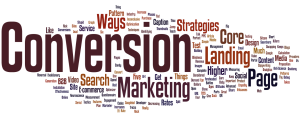Search. Browse. Abandon? How Automation Converts Browsers Into Buyers
- Fahad H

- Oct 25, 2013
- 4 min read

Image via Shutterstock
Any marketer (at least one who hasn’t been living in a cave without Wi-Fi) knows the potential of search traffic in regard to driving sales. But exactly how much use can really be made of the potential customers driven to a site through search engines? Sometimes the details are a bit hazy with direct attribution hard to pin down.
Marketers can drastically increase the rate at which they convert those few words in a search box to the holy grail of end results — a valuable sale — by correctly implementing and using marketing automation platforms in all available channels.
The five steps below can help you hook more of the potential leads that come to your site via search.
Step 1: Know Your Tools
Once a company deploys marketing automation software, there is a whole new set of tools at the marketing team’s disposal. So the first step? Understand them – and then use them.
Invest in industry-leading tools like Marketo that allow you to capture data about every move the prospect makes on your site. Then make sure you spend time understanding how important it is to embed defined conversion points in each campaign, so you have good data to base your campaigns upon.
Step 2: Put Information In The Right Place
When a buyer reaches your site, s/he has already searched for a particular set of terms. He or she should be able to find what they’re looking for as quickly as possible. Too many companies waste their investment in search by directing the buyer to a homepage, pricing page or demo section.
Your buyer is using a search engine to learn — meet them with information that will help them make a decision. Targeting content assets, like case studies or customer testimonials, will help you communicate value in your solution as well as capture the search traffic with a call-to-action that feeds contact info into your marketing automation program.
Step 3: Simplify Your Forms
If you’ve embraced marketing automation, then you know that bringing new names to your prospects list is gold. Reduce the forms used to request materials to three simple fields: name, email and social handle.
You can also allow a prospect to sign in with his or her social account such as Facebook or Twitter — which transforms a prohibitive form into a single click. You’re just getting to know these folks – don’t ask them to over-share. It won’t work out in your favor.
Step 4: Use Email To Add Value And Move Toward The Sale
Once you’ve captured your search visitors’ contact information, email marketing helps you move them down the sales funnel toward the final purchase. When you’re dealing with email marketing, you’re no longer looking to capture information, because you already have the contacts of the buyer you want to engage. Never ask prospects – or anyone – to re-enter information you already have via email content.
To see the best conversions from marketing automation for emails, start by offering something to the recipient, such as a whitepaper download or an event invitation. It again breaks down the trust barrier and establishes you as an expert.
When the recipient downloads what you’re offering, you have the click you want. Don’t forget that you now have these buyers on a redirect page – 90 percent of marketers make the mistake of stopping at the click.
Next, present a follow-up offer. Amazon made this famous, so steal their idea – after all, they seem to be doing pretty well, don’t they? Allow your recently engaged buyers to download a secondary piece of content, or give them a quick choice of options to fill out another piece of information.
Step 5: Look At Your Data, Then Adapt
As with all areas of digital marketing, the landscape of where buyers search and how to convert them is constantly changing. The way customers search is moving away from stand-alone search engines, especially as social sites begin to incorporate more and more search capability.
As a result, ads and pay-per-click campaigns on platforms like LinkedIn and Facebook are converting at higher and higher rates. The important thing to consider is that your buyer persona process will divulge where your buyer is hanging out, so don’t assume – the process should be much more organic. Find out where your best customers found you, and then meet more great customers there. It really can be that easy.
Remember: Marketing automation is an engine based on rules. If you plug in the wrong rules and the wrong messaging, you’re going to get the wrong results. Start with customer data and then tailor your campaigns based upon what you’ve learned. As your buyer evolves, so should you.
Even though you may be tempted to go for what looks like a quick sale, keep in mind that buyers typically don’t buy the same day — they learn online, they formulate and they learn to trust. Nurturing according to the information given to you is the way to your buyers’ hearts.








Comments